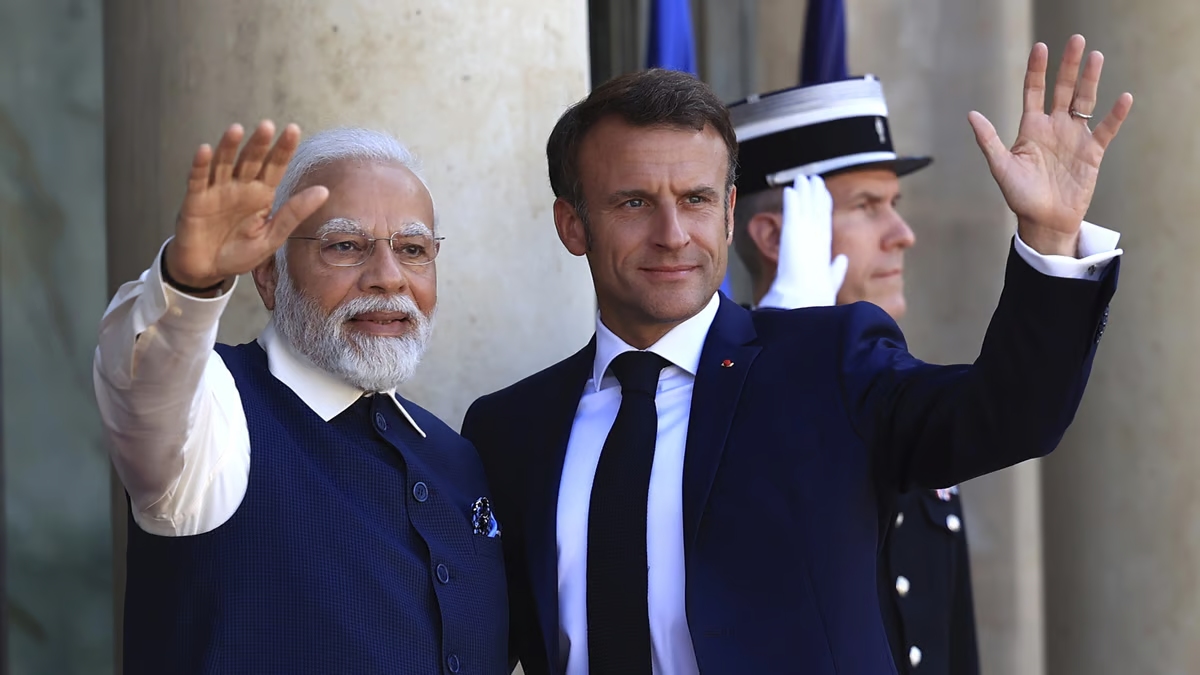India–US Trade Tensions Rise Over Steel and Auto Tariffs NMDC Limited reports a 38% drop in Q4 FY24 consolidated net profit RINL to Raise $23 Million Through Land Sales Amid Crisis

India and France have made history by releasing a detailed “defence industrial roadmap,” representing a significant advancement in their strategic alliance. This plan highlights the close links between the two countries and aims to promote collaboration in defence production, co-design, and co-development of military gear. Recent negotiations in Jaipur, India, on January 25 between French President Emmanuel Macron and Indian Prime Minister Narendra Modi opened the door to several agreements that will boost defence cooperation between the two countries and cover important domains like space, energy, digital health, agriculture, and education.
Challenges and Negotiations:
However, the path to this great leap was not without obstacles. The unified statement was delayed due to differences in the roadmap’s language. The determination to fortify defence ties triumphed despite this setback. Macron was in Delhi for a 30-hour visit to India, accompanied by 40 officials, including his new Foreign Minister, Stéphane Séjourné, and the Ministers of Defence and Culture.
Cost negotiations are underway for significant government-to-government defence agreements, such as purchasing Scorpene-class submarines and Rafale-M fighter aircraft. According to sources, these multibillion-dollar agreements might be completed by the end of the year, possibly changing the landscape of defence cooperation between the two countries.
Airbus-TATA chopper deal
While the two countries did not announce any progress on the big-ticket government-to-government deals on fighter jets, engines, and submarines announced during Modi’s visit to Paris last July, officials said that Airbus and TATA agreed on at least one joint venture for the local manufacture of civilian helicopters during the visit. According to sources, two massive multibillion-dollar defence transactions between the two countries are currently in the cost negotiation phase: 26 Rafale-M fighter fighters for the Indian Navy’s aircraft carriers and three new Scorpene-class conventional submarines.
“The focus and priority of the [industrial defence] roadmap are to identify opportunities for partnership in the defence industrial sector that prioritises co-designing, co-development, co-production and also build the defence supply chains between the two countries so that they can fulfil the defence needs of not only India and France but also be a useful contributor in the security partnership with other countries who might need similar products,” said Foreign Secretary Vinay Kwatra. He detailed the roadmap, including sectors of a partnership spanning from aircraft to land and maritime warfare, particularly undersea domain awareness, space, robotic technologies, cyber-defence, and artificial intelligence-led vehicles.
Press visa restrictions
The visit also discussed non-defence issues, notably the French government’s worries about press visa restrictions. Both parties responded to the possibility of deporting a French journalist. Even though Indian Foreign Secretary Vinay Kwatra maintained that the problem was one of “compliance with the rules,” this emphasises how critical it is to resolve journalistic practices and media freedom issues.
On Friday, at least 30 foreign correspondents from India issued a letter of protest over the case, stating that they were all “grappling with increased visa restrictions in recent years” and pleading with the government to help “facilitate the vital work of a free press in line with India’s democratic traditions”.
Strategic Partnership
The defence industrial plan with France, which “prioritises co-designing, co-development, and co-production,” matches India’s collaborative efforts with the United States to co-design and co-develop military equipment. However, the depth of the strategic collaboration with France is reflected in co-design efforts as well as France’s willingness to transmit jet engine technology that only a few countries possess.
The strengthening of ties between France and India is thought to have resulted from Macron accepting Modi’s offer for Republic Day, which was extended just approximately one month beforehand when U.S. President Joe Biden stated that he would not be able to visit India for both the Quad Summit and Republic Day. This was Macron’s third trip to India, his seventh meeting with Modi since January 2023, and the sixth time, out of all the countries, that a French president had been invited to Republic Day.
Recent advancements in India-France defence relations mark a paradigm shift in global security cooperation. The defence industrial plan and agreements in several areas demonstrate a dedication to bolstering national security and promoting stability on a global scale. India and France’s future collaboration is expected to be more robust and diverse as significant defence deal negotiations advance and joint ventures take shape. This strategic alignment strengthens both countries’ defence capacities and reaffirms their commitment to fostering a more secure and safe global community.
Also Read : Steel Market Insights: Week 1 Recap (March 1 - March 5, 2025) Global vs Indian Steel Demand – A Diverging Path in 2025